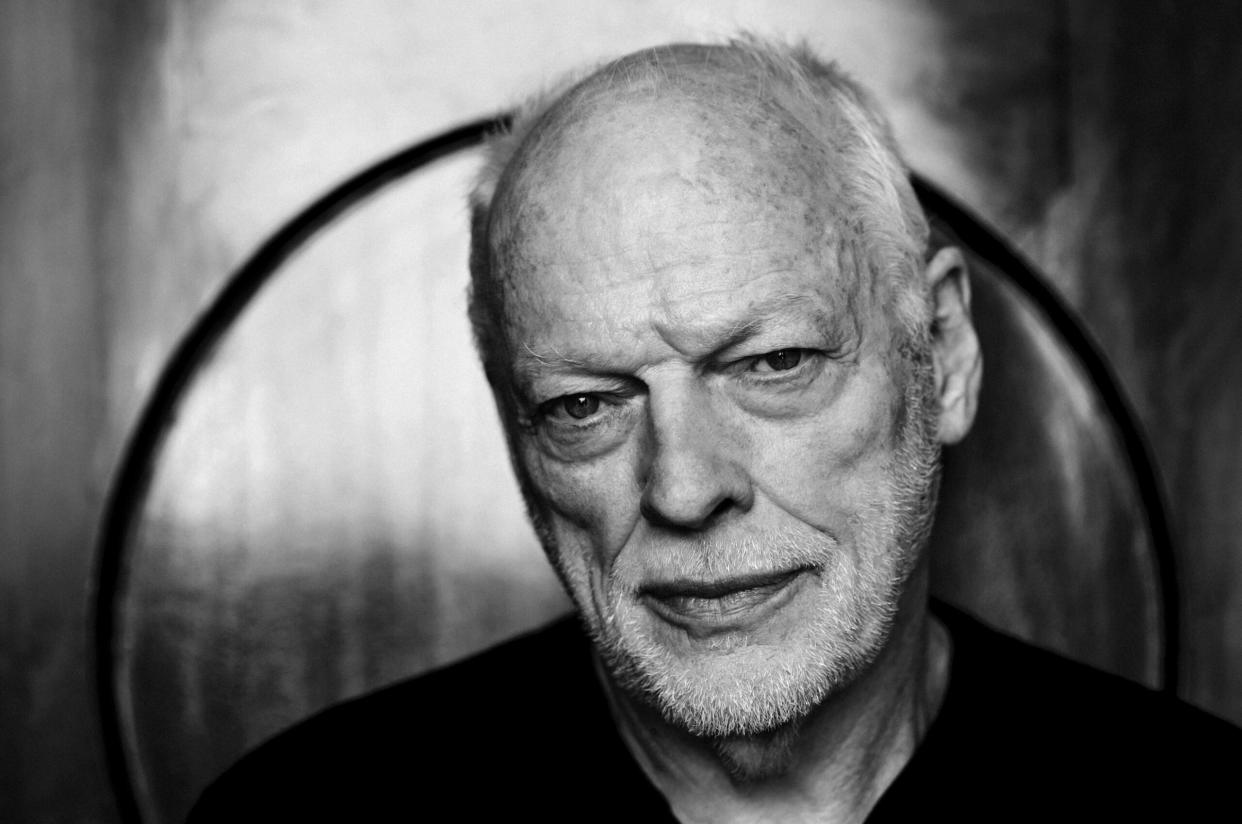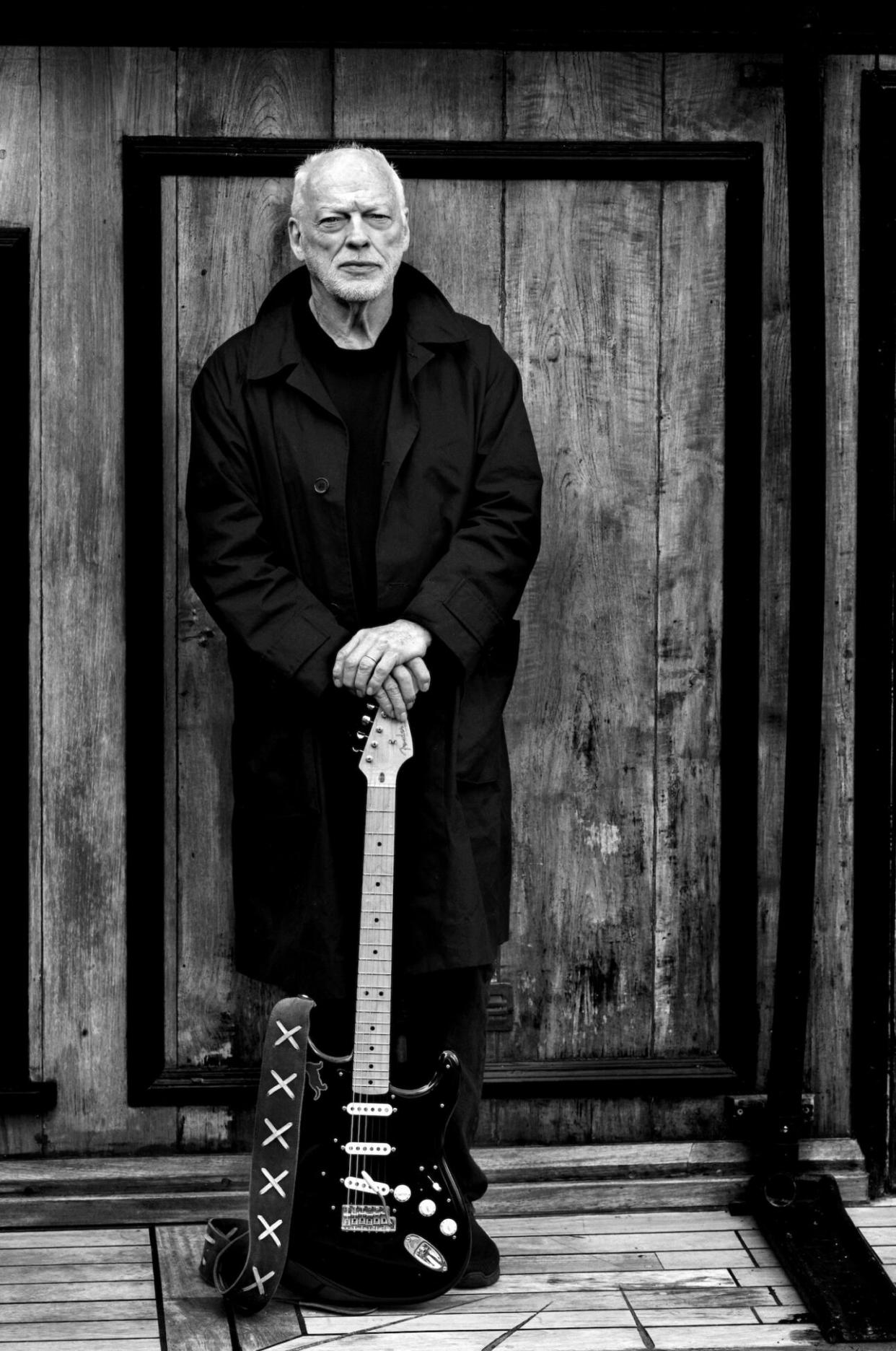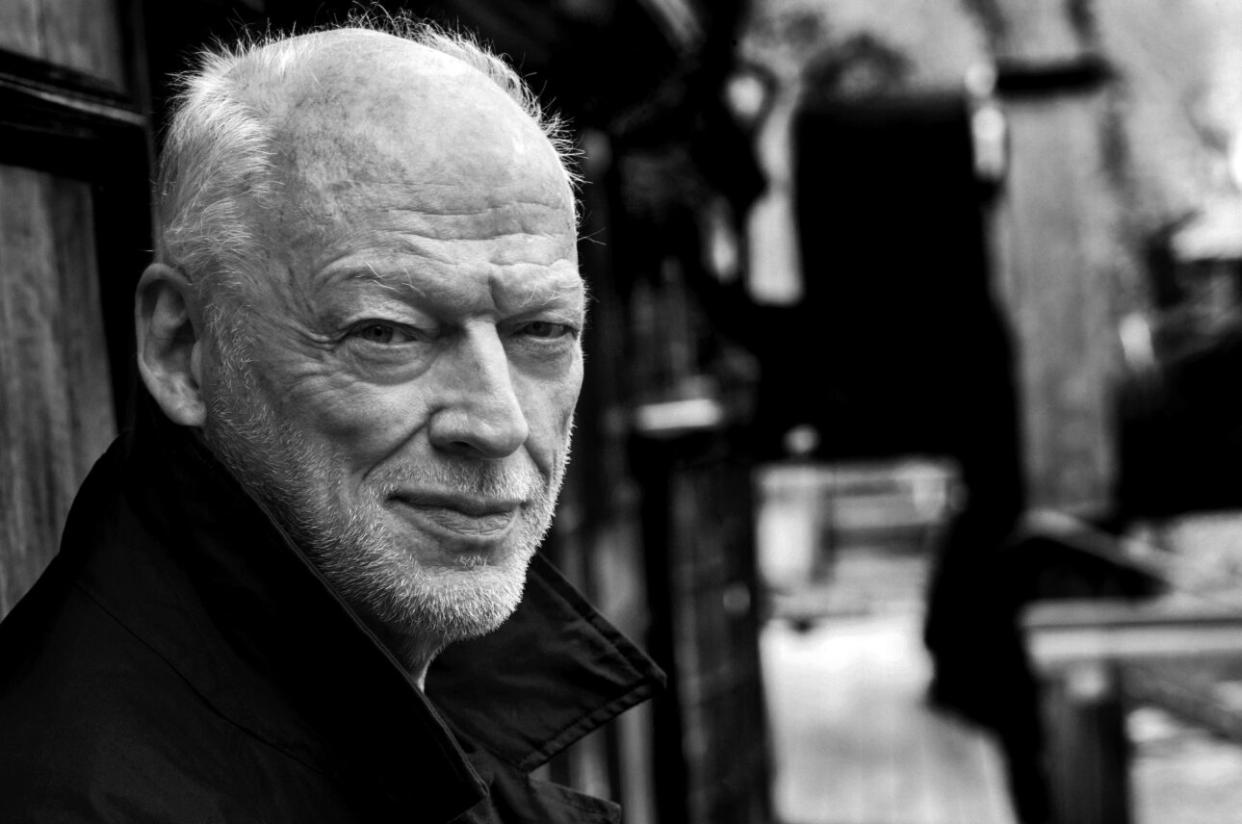David Gilmour: The Right Place to Be Sure

At the start of our conversation, David Gilmour makes it plain that he prefers to focus on the music he’s making today. “The old Pink Floyd stuff is of scant relevance to me now,” he says. “And I have a sense of feeling liberated from expectations of that.” And that’s fair enough. Save for the one-off, 23-minute Live 8 reunion in 2005, the last time Pink Floyd played a full concert in front of an audience was October 1994.
In the years since, guitarist and singer Gilmour has released two well-regarded studio albums (2006’s On an Island and Rattle That Lock from 2015) and a pair of live albums. He has lent his signature guitar work to recordings by Paul McCartney and Ringo Starr, Donovan, and Roxy Music’s Phil Manzanera and Bryan Ferry; he’s collaborated with electronic duo the Orb. On world tours in 2006 and 2015/2016, Gilmour played a combined 80-plus performances. Those dates featured some classic Floyd material, but he has long been more interested in creating new music rather than basking in the glories of days long gone by.
More from Spin:
Nick Cave and the Bad Seeds Announce 2025 North American Tour
Linkin Park Tap Emily Armstrong As New Singer, Announce Album, Tour
That perspective is underscored by Gilmour’s newest release, Luck and Strange, out September 6 from Sony Music. Like much of the music created in recent years, Gilmour’s new album was inevitably informed by the global pandemic. Working with his longtime songwriting partner (and spouse of 30 years) Polly Samson, Gilmour came up with a clutch of new songs. “We were locked down,” Gilmour says, “and the things we discussed in our family were topics of mortality: ‘These pandemics, maybe there’ll be more of them.’ And all of that had an influence on Polly’s lyrics.”

Gilmour says that Samson has “a remarkable ability to … write from her own perspective but have it [come out] universal.” While Pink Floyd’s music—mostly featuring lyrics by bassist Roger Waters—always featured emotional content, there’s an accessible warmth and vulnerability to Samson’s lyrics that sets it apart from the songs Gilmour sang in the 1970s.
In the old days, Gilmour would sometimes collaborate on the instrumental side with his bandmates in Pink Floyd. “On Meddle and The Dark Side of the Moon, a lot of work that we did was sitting in a rehearsal room and throwing ideas around,” he says. “For Atom Heart Mother, I came into the room with the main theme. That’s where it all started, with everyone joining and playing that, [followed by] weeks of developing it and moving it and adding pieces and taking away pieces.” Today Gilmour’s process is very different. “I don’t have so many moments now when I am doing that in a room with a bunch of people,” he says.
After creating those pieces, he shares his recordings with Samson in an open-ended manner. “I hope the music will reveal itself to Polly,” he says. “She’ll say to me, ‘Do you have anything specific that you think this might be about?’” Gilmour says that while he might occasionally share a lyrical idea with his wife, the themes “are usually all hers.”
Sometimes the development process is a lengthy one. “I write all the time,” Gilmour says, “but there are pieces of music on Luck and Strange that, in their birth state, go back as far as 1997.” One song, the evocative and contemplative “Sings,” features a clip of the couple’s son Joe—captured on MiniDisc when he was two—exhorting his dad to sing. “He’s now nearly 30,” Gilmour points out.
Another of the album’s standout songs, “The Piper’s Call,” began its life four or five years ago. And the album’s title track dates from a 2007 jam session with Pink Floyd keyboardist Rick Wright, who would pass away the following year. “But some of the songs are brand new,” Gilmour says.

After Gilmour amassed a cache of song ideas, the task of making an album began in early 2023. “We did hide ourselves away in a little studio in London,” Gilmour says. “More or less nine-to-five, five days a week, Polly and I were trying to move these half-formed ideas into something more substantial.”
The arrangements on Luck and Strange add a widescreen dimension to Gilmour’s songs. “The Piper’s Call” features strings and a large vocal chorus; a close listen reveals dissonant harmonies and odd vocal improvisations. “There’s a guitar solo thundering on and a band playing,” Gilmour notes, but he believes that Will Gardner’s orchestration adds a whole level of excitement. “If you analyze it, these things are not strictly in tune, and they’re not strictly in time; it demands a different way of thinking to accept this.” But he says that if one gives the song a few listens, “the illogical logic makes itself clear.”
Gilmour co-produced the album with Charlie Andrew, best known for his work with Alt-J. And Gilmour affords Andrew much credit for Luck and Strange’s lush and expansive sound. “Partly because they wanted to do a Dolby Atmos mix as well, Charlie and his lovely engineer Matt Glasbey have taken a different approach,” he explains. “Where I would use one or maybe two mics to record something, they’ll use 10.” He observes that their approach “seems a bit mad, but it works.”
In the later years of Pink Floyd, Gilmour led the group without Waters’ involvement. “I was left in charge of this thing on my own, pretty much,” he says. “I never consciously tried to make things as if they were more related to our previous history; I just did whatever I thought was right.” These days Gilmour is unencumbered by ideas regarding what his music “should” sound like; he follows his muse wherever it might lead.

On Gilmour’s previous studio album, Rattle That Lock, that thinking led to the creation of “The Girl in the Yellow Dress.” The song’s sumptuous Parisian jazz character would have been unthinkable on a Pink Floyd album. Gilmour is clearly inspired by the freedom and creative latitude that’s built into his solo work, but he emphasizes that his approach is born of each moment. “I would never try to be eclectic,” he emphasizes. “I have invented some new things in terms of sound—like ‘On the Run’ from Dark Side—but I’m never searching for them.”
Though it was created with a lineup of support musicians that includes Guy Pratt, Roger Eno, and ace session drummer Steve Gadd, Luck and Strange is in many ways a Gilmour family affair. In addition to Polly Samson’s lyrics, son Gabriel provides backing vocals on a few tracks, Charlie Gilmour contributed lyrics to “Scattered,” and daughter Romany sings harmony and plays harp.
But it’s Romany Gilmour’s lead vocal on “Between Two Points” that will attract the most attention. The song is a cover of an overlooked 1999 gem from dream-pop duo the Montgolfier Brothers. Romany’s haunting and luxurious vocals are a highlight of the record. “Her voice on ‘Between Two Points’ is fucking brilliant,” Gilmour says. “It makes the hair stand up on the back of my neck.” And the song is indicative of Gilmour’s sense of liberation in making Luck and Strange. “Now,” he says, “as David Gilmour, I can do a cover of a song by someone else and have a daughter of mine sing it; I can do that. And that is a freedom that I relish.”
Gilmour’s 2024 live dates in support of Luck and Strange are limited to 21 concerts in Rome, London, Los Angeles, and New York City.
To see our running list of the top 100 greatest rock stars of all time, click here.
